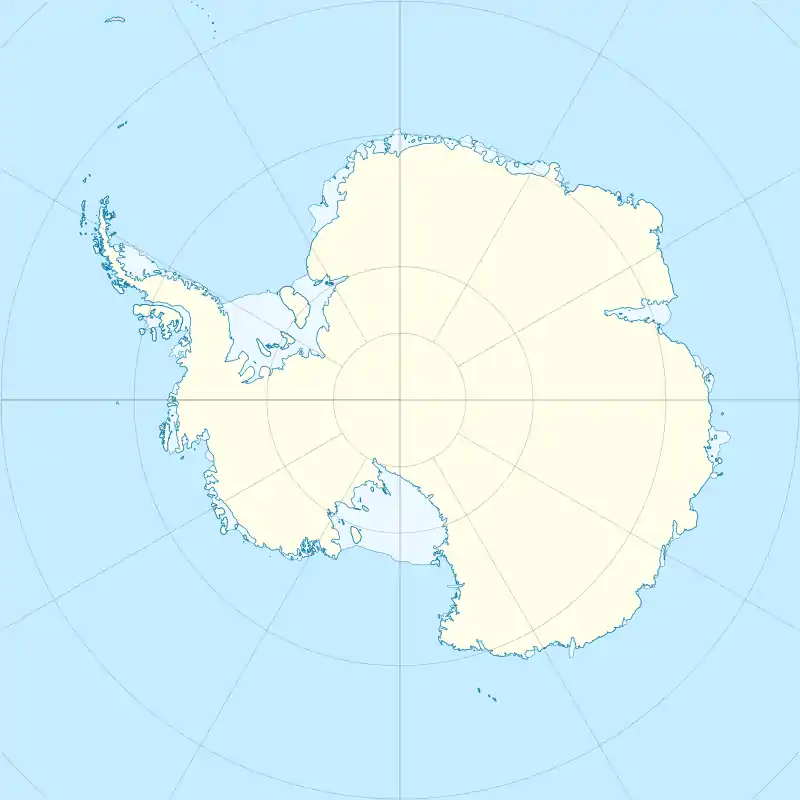Rongé Island
Rongé Island (also Curville Island, De Rongé Island, Isla Curville, or Rouge Island) is a high, rugged island 8 km (5 mi) long, the largest island of the group which forms the west side of Errera Channel, off the west coast of Graham Land in Antarctica.
.jpg.webp) | |
 Rongé Island Location in Antarctica | |
| Geography | |
|---|---|
| Location | Antarctica |
| Coordinates | 64°43′S 62°41′W |
| Length | 8 km (5 mi) |
| Highest elevation | 1,158 m (3799 ft) |
| Highest point | Mount Britannia |
| Administration | |
| Administered under the Antarctic Treaty System | |
| Demographics | |
| Population | Uninhabited |
Rongé Island was discovered by the Belgian Antarctic Expedition (BAE) of 1897–1899 under Adrien de Gerlache who named it for Madame de Rongé (cousin of Johannes Ronge), a contributor to the expedition.[1]
Geography
Ketley Point forms the western end of Rongé Island.[2] Sherlac Point marks the southeast end of the island.[3] Both were charted by the Belgian Antarctic Expedition under Gerlache and named by the UK Antarctic Place-Names Committee in 1960.[2][3] Ketley was named for John Ketley, a Falkland Islands Dependencies Survey (FIDS) assistant surveyor at the Danco Island station in 1956 and at Arthur Harbour in 1957.[2] Sherlac was initially named "Cap Charles" by Gerlache, but to avoid confusion with Charles Point in Hughes Bay, it was renamed "Sherlac", an anagram of Charles.[3]
See also
References
- "Rongé Island". Geographic Names Information System. United States Geological Survey, United States Department of the Interior. Retrieved 30 April 2013.
- "Ketley Point". Geographic Names Information System. United States Geological Survey, United States Department of the Interior. Retrieved 30 April 2013.
- "Sherlac Point". Geographic Names Information System. United States Geological Survey, United States Department of the Interior. Retrieved 6 August 2018.
![]() This article incorporates public domain material from websites or documents of the United States Geological Survey.
This article incorporates public domain material from websites or documents of the United States Geological Survey.